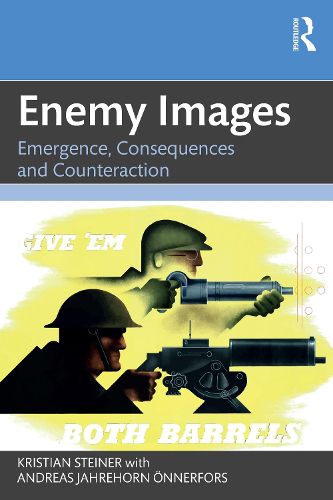Readings Newsletter
Become a Readings Member to make your shopping experience even easier.
Sign in or sign up for free!
You’re not far away from qualifying for FREE standard shipping within Australia
You’ve qualified for FREE standard shipping within Australia
The cart is loading…






This book offers a detailed understanding of 'enemy images', which are used in political rhetoric to dehumanize adversaries for various purposes, such as to legitimate violent conflicts.
Applying theoretical models to a strong catalogue of historical and recent examples - from blood libel narratives in medieval manuscripts, to state-sponsored children's board games in Nazi Germany and social media posts about the wars in Gaza and Ukraine - the book identifies how 'enemy images' have led to the development of dominant socio-political paradigms by providing justifications for and reinforcements of violent conflicts both within and between societies. In doing so, the work offers an up-to-date, accessible and authoritative overview of how to identify, analyse, and counteract energy images - which will be key to fostering social environments of reconciliation and peacebuilding for the future.
This book will be of much interest to students and scholars of peace and conflict studies, International Relations, history, political sociology, and communication studies.
$9.00 standard shipping within Australia
FREE standard shipping within Australia for orders over $100.00
Express & International shipping calculated at checkout
This book offers a detailed understanding of 'enemy images', which are used in political rhetoric to dehumanize adversaries for various purposes, such as to legitimate violent conflicts.
Applying theoretical models to a strong catalogue of historical and recent examples - from blood libel narratives in medieval manuscripts, to state-sponsored children's board games in Nazi Germany and social media posts about the wars in Gaza and Ukraine - the book identifies how 'enemy images' have led to the development of dominant socio-political paradigms by providing justifications for and reinforcements of violent conflicts both within and between societies. In doing so, the work offers an up-to-date, accessible and authoritative overview of how to identify, analyse, and counteract energy images - which will be key to fostering social environments of reconciliation and peacebuilding for the future.
This book will be of much interest to students and scholars of peace and conflict studies, International Relations, history, political sociology, and communication studies.